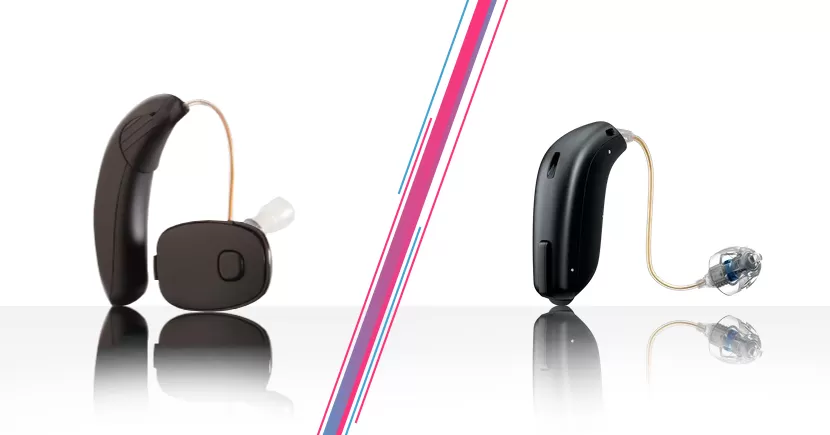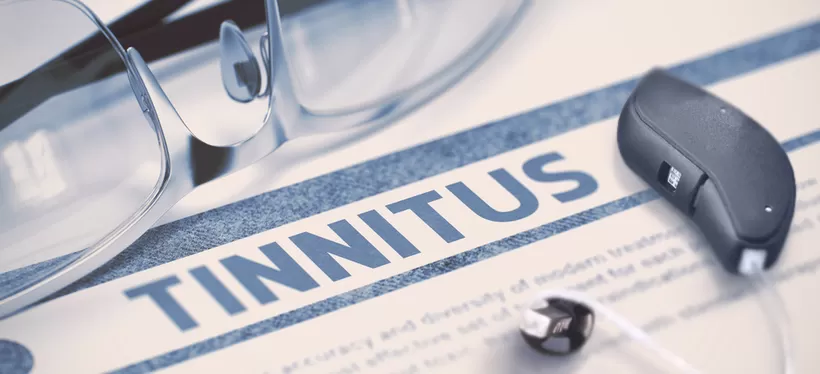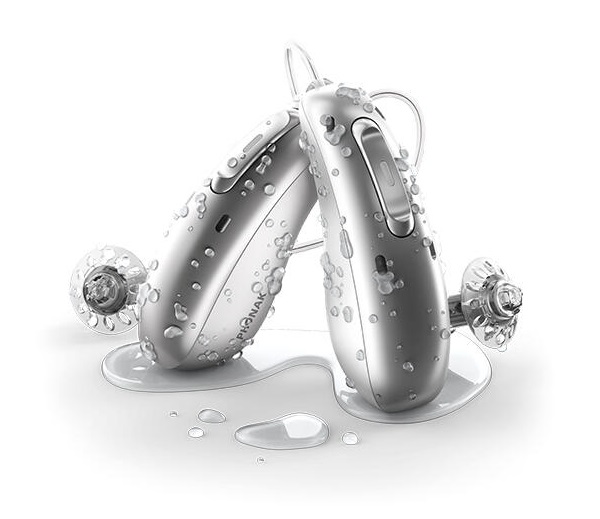Oticon Intent Reviewed: 7 Days with AI-Powered, Sensor-Enhanced Hearing Aids
Have you ever spotted a Google Street View car, with cameras perched on top? These cars roam the streets, capturing 360-degree images of public spaces that are then stitched together to create a virtual representation of the world. The data they collect enhances navigation, mapping, and exploration on a global scale.
Now, imagine if a hearing aid manufacturer took a similar approach—gathering data not from streets, but from real-life sound environments. In fact, you don’t have to imagine it, because Oticon has done just that. Since 2021, researchers equipped with 360-degree microphones have captured 12 million real-life sound scenes for Oticon. This vast collection of auditory data is used to train the deep neural network that powers their hearing aids.
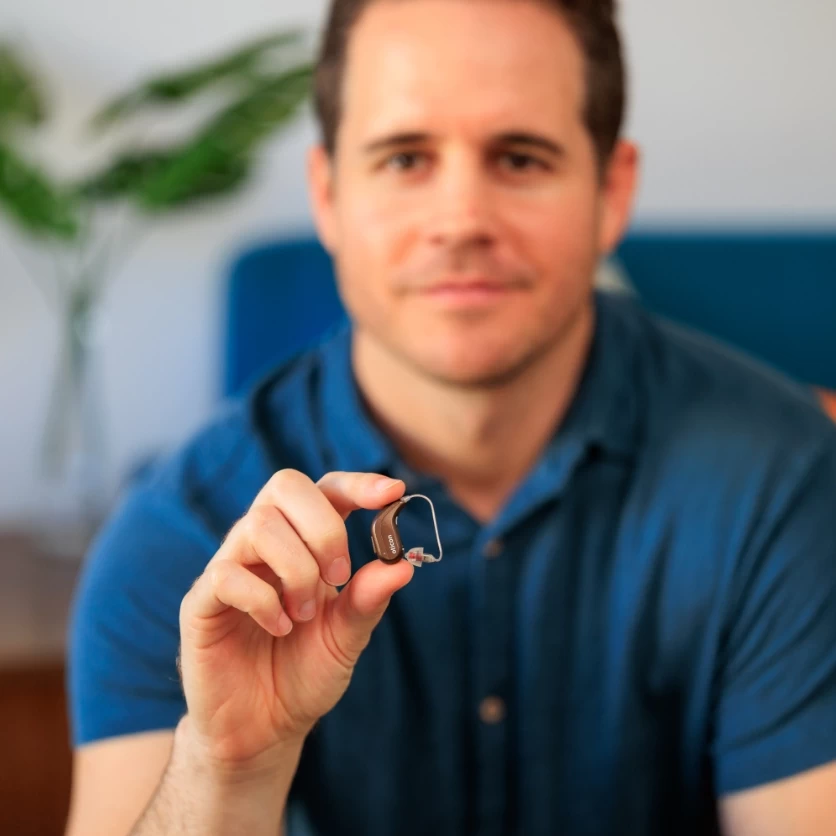
The embodiment of all this work weighs just over 3 grams and measures 26mm tall—so light you can hardly feel it on your ear. And with the February 2024 release of Oticon Intent, that deep neural network has just become even more powerful.
What’s New with Oticon Intent?
In the last 10 years, the jargon around hearing aid tech has grown increasingly complicated. Bear with me for a moment as I try to make all this digestible.
Intent is built on Oticon’s latest platform/chip, Sirius
You can think of Sirius as the hardware “brain” of the hearing aid—it’s the foundational hardware platform that powers the entire system. The Sirius platform is the core power source, like the engine in a car. Anytime a manufacturer updates their chip—like Oticon did here—it’s a big deal, because they only do it if they have to.
Intent features Oticon’s next generation sound processing technology—MoreSound Intelligence 3.0
You can think of MoreSound Intelligence 3.0 (MSI 3.0) as the software “brain” of the hearing aid. It’s a suite of features designed to analyze the full sound scene and improve hearing aid performance by providing clearer, more balanced audio. The system is part of Oticon's BrainHearing approach, which focuses on supporting the brain's natural sound processing abilities. If the Sirius platform is the engine, MSI 3.0 is like a navigation system that guides and optimizes the drive (or hearing experience).
Embedded within MoreSound Intelligence 3.0 is Oticon’s second-generation deep neural network, DNN 2.0
The deep neural network that powers Intent hearing aids is vastly improved compared to the DNN that was used in the previous Oticon More and Real hearing aids. Here’s the whitepaper from Oticon, and here’s a summary:
- DNN 2.0 analyzes sound across 256 channels—far more than the 24 channels used before—allowing for greater detail and clarity in differentiating sounds like voices and background noise.
- DNN 2.0 provides up to 12 dB of noise suppression, effectively reducing unwanted background noise and providing more contrast between speech and noise, making conversations in crowded environments much clearer.
- Additionally, DNN 2.0 employs adaptive learning, continuously refining its ability to distinguish important sounds from distractions, which enhances your listening experience over time.
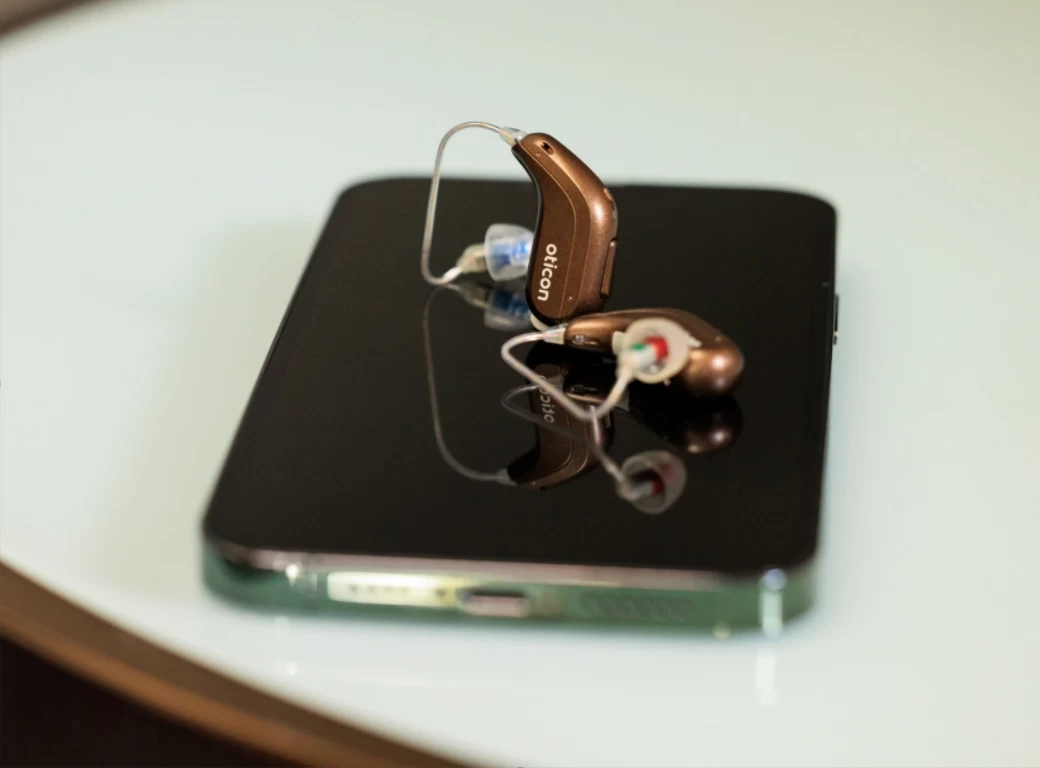
Intent uses 4D Sensor technology
In noisy environments, when you want to hear someone better, you naturally turn your head or lean in closer to them. What if a hearing aid could understand that movement and use it to help you understand what you want to hear? That’s exactly the goal Oticon had in mind when adding sensors to Intent hearing aids—to understand the wearer’s listening intent.
The 4D sensors in Intent hearing aids—accelerometers and gyroscopes— track head movements in three dimensions (up/down, left/right, forward/backward) and add a 'fourth dimension' of understanding your behavior to adjust the sound automatically.
MSI 3.0 ingests the sensor data and then acts like a detective, piecing together all the clues of the sensor data figuring out if you are moving, standing still, engaged in one-on-one conversation, or moving around needing to be more aware of your surroundings. Based on all those clues, the hearing aid adjusts how the sound is processed to separate the important sounds (like speech) from background noise.
Studies show that 4D Sensor technology improves speech comprehension by 15%, and that when users are engaged in an intimate conversation in noisy environments, Oticon Intent provides an astounding 35% more access to speech cues compared to the previous generation Oticon Real.
This isn’t just hype—the 4D Sensor tech can actually reduce the stress on your body
Oticon released a study that utilized biological markers to highlight the effectiveness of the 4D sensor technology in its Intent hearing aids.
Key findings include:
- Pupil Size: Pupil dilation indicates cognitive load and listening effort. The study revealed a 31% reduction in pupil size when using Oticon Intent, signifying less mental effort compared to the previous Oticon Real model.
- Heart Rate: Heart rate was monitored to evaluate listening stress. Participants using Oticon Intent showed a 40% decrease in heart rate, indicating lower stress levels during listening tasks than those using Oticon Real.
The benefits of the added sensors are indisputable, and several other hearing aid manufacturers are using sensors to inform their sound processing.
I know— that was a lot of stats, and a lot of jargon. The bottom line is—as a result of all of the above improvements:
Hearing aid users prefer Oticon Intent compared to the previous generation Oticon Real (source)
The reason that’s significant is Oticon Real wasn’t exactly a “slouch” of a hearing aid. During the entire time Oticon Real was Oticon’s flagship hearing aid (February 2023 - February 2024), it was our best-selling and highest rated prescription hearing aid—and our customers tend to be some of the savviest and well-educated buyers in the market.

Finally, some less impactful headlines, but still important, include the switch to Bluetooth LE Audio, Auracast compatibility, a new MiniFit detect speaker, a new design, and improved rechargeability.
Intent has Next-generation Bluetooth® LE Audio
Bluetooth LE (Low Energy) Audio is the next generation of Bluetooth and it promises several benefits for hearing aid wearers:
- Better sound quality
- Improved battery life
- Direct connectivity to more devices
- Lower latency (audio delay)
- Hands-free phone calls
- Auracast-compatibility (more on that below)
The fact that Intent has Bluetooth LE Audio makes them future-proof, but unfortunately, you’re not going to realize the above-listed benefits unless your phone supports Bluetooth LE Audio, and most don’t.
According to Oticon's device compatibility list, there are only a handful of phones—Android devices—that have Bluetooth LE Audio:
- Google Pixel 7 & 8, including Pro models
- Samsung Galaxy A54
- Sony Xperia 5 V 5G
For most phones, particularly those purchased after 2017, if they have Bluetooth 5.0 or newer, you should eventually be able to utilize the Bluetooth LE Audio features of Intent hearing aids. This includes all iPhone 8 models and newer, as well as Galaxy S8 models and newer.
Bluetooth LE Audio is an enhancement integrated into Bluetooth 5.0 and later. So while the hardware needed to support Bluetooth LE Audio is already present in most devices (devices with Bluetooth 5.0 and later) activating Bluetooth LE Audio requires a software update from the manufacturer. The decision to roll out this update ultimately lies with the manufacturers, but it's likely they will enable Bluetooth LE Audio as consumer demand increases.
What if your phone doesn’t have Bluetooth LE Audio?
If your phone doesn’t have Bluetooth LE Audio, don’t worry, you can still pair them up to Oticon Intent. Intent hearing aids also support the MFi (Made for iPhone) and Android’s ASHA (Audio Streaming for Hearing Aids) specifications. These are the earlier Bluetooth connectivity specifications (with stripped down feature sets as compared to Bluetooth LE Audio), but the good news is those specifications are supported by pretty much all phones—you can confirm using Oticon’s device compatibility list.
So for now, getting an Intent hearing aid with Bluetooth LE Audio is more about future-proofing the hearing aid. It means that once Bluetooth LE Audio is widely-used and activated on your phone, you’re not going to have to buy new hearing aids just to get the Bluetooth LE Audio features.
Intent is Auracast™-ready
Auracast is a new feature of Bluetooth LE Audio that everyone is going to benefit from—not just hearing aid users. Auracast is going to allow sound from public venues (airports, theaters, gyms, churches), to stream directly to hearing aids and headphones.
Here’s how it works (assuming you have Intent hearing aids):
- When you’re at a venue that has a sound system, you’ll go into the Bluetooth section on your phone and search for the ‘Broadcast Name’, just like you’d search for a wi-fi network to join.
- You’ll join the Broadcast by entering a Broadcast Code that the venue supplies, just like entering a wifi-password.
- The audio will then stream to your Intent hearing aids.
Here’s an excellent explainer video of how Auracast works (fast forward to 1:00).
In order for Auracast to work, the venue needs to have an Auracast broadcasting device integrated with their sound system. They’re simple to install and they’re not expensive, but most venues are not even aware of what Auracast is at the moment (and most consumers aren’t either), so it’s going to take a few years for venues to adopt this technology.
For that reason, hearing aid manufacturers are not in a rush to activate Auracast in their hearing aids. The necessary hardware is in the hearing aids, deactivated, and Oticon says they’ll activate Auracast in a Spring 2025 firmware update.
The industry's first self-calibrating speaker, miniFit Detect
Receivers (speakers) previous to the Intent model were called ‘miniFit’ receivers. Intent receivers are called ‘miniFit Detect’, and these new Detect speakers come standard with all Intent orders.
Here’s what the ‘Detect’ part of that is all about—
miniFit Detect speakers are an industry first, and they’re able to detect:
- If the receiver/speaker wire is faulty, in which case the hearing aid indicator light will blink orange 4 times.
- If the receiver/speaker is the correct receiver for the hearing aid. When the receiver is plugged into the hearing aid (by your hearing care provider), the hearing aid can tell what type of receiver it is, and compare that to other data inside the hearing aids (such as your hearing loss scores), and ensure it’s the best receiver for you.
Oticon says the Detect speakers are self-calibrating smart speakers, and that (since they can read data in the hearing aid), they ensure the hearing aids are providing the appropriate gain for your hearing loss, to within 1dB, and that that is up to 57% more precise compared to previous Oticon speakers.
New Design & Improved Rechargeability
The Intent press release states Intent is “Oticon’s smallest rechargeable miniRITE hearing aid,” but I think that’s only partially true. Based on measurements of Oticon Intent vs. Oticon Real, it actually appears that by volume Intent is ~8% larger than Real overall. However, Intent certainly does appear smaller overall—it’s all about where the volume is distributed. Intent is a shorter and thicker device, and this does make it—at least cosmetically—more discreet than Real. In addition, Intent is now the fastest-charging hearing aid in the industry, achieving a full charge in just 2 hours.
What comes with an order of Oticon Intent

Here’s what comes with an order of Intent hearing aids:
- (2) Intent miniRITE R hearing aids
- (2) miniFit Detect speakers (receivers)
- Pack of domes (these go on the ends of the receivers)
- Pack of filters (these keep the wax out of the receivers)
- Charger. Technically it’s called the miniRITE R charger—it’s the standard charger that comes with all orders. It gives the hearing aids a full charge within 2 hours. You can charge the hearing aids via USB-C cord, or with a wall plug. There is a premium charger available called the Smart Charger (scroll down this page to the ‘accessories’ section to learn about that.)
- Clam-shell style case with cleaning cloth and tool (your hearing provider will show you how to use these).
- User guide. Helpful, but also generically-written. These hearing aids are highly customizable and a lot of what you read in this user guide may not apply to your exact set of hearing aids—it all depends on how your provider has set them up.
My Oticon Intent 1 Review
For this review I ordered the Oticon Intent 1 miniRITE R. Let’s break that down a bit. MiniRITE R refers to the form factor, in this case, it’s a “miniature receiver-in-the-ear” that is rechargeable. In fact, it’s the only model Intent is available in right now. The “1” refers to the “technology level” of the hearing aid, and Intent comes in three different “technology levels”—Intent 1, Intent 2, and Intent 3. Intent 1 is the best, and as of November 2024 it’s the technology level that 77.5% of our customers order.
I ordered Intent 1 because in order to evaluate a hearing aid, I want to make sure I’m testing the manufacturer’s best technology. Intent 1 offers 12 dB of what Oticon calls ‘Neural Noise Suppression’ (the amount of noise suppression provided by the hearing aids). That makes Intent 1 Oticon’s best hearing aid for hearing in noise. If you’re interested in reading about the differences in Intent technology levels, you can read further down this page, or watch this video I made.
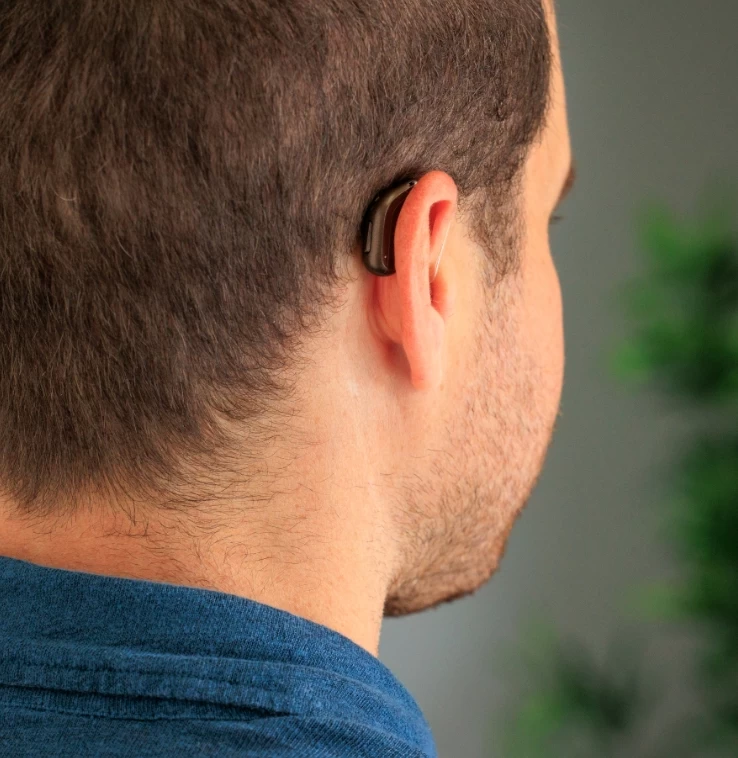
I ordered them in the Chestnut Brown color because it’s what would match my hair color best, and it’s what I would feel most comfortable wearing during my 7 day trial. Chestnut Brown is far from the most popular color though. Nearly half of our customers order this in the Chroma Beige or Silver Grey color (you can see all the colors available as well as the popularity of each color at the top of this page).
First, a bit about my hearing
Objectively speaking, I have normal hearing. If I take a hearing test, I will pass. However, I have what I suspect to be hidden hearing loss. That means my hearing loss can’t be measured by standard hearing tests, but that I’ll have a harder time than most people hearing in noisy environments with a lot of background noise. In noisy restaurants I’m reading lips, piecing words together to gather context clues, and sometimes just altogether guessing at what a person is saying.
Struggling in noise, but having normal hearing otherwise, helps me to evaluate hearing aids—especially since hearing in noise is one of the biggest challenges for those with hearing loss. In all other environments, since my hearing is normal, I’m able to notice the subtleties in different hearing aids that other wearers may not even perceive. My background in the hearing aid industry also gives me insight to know what is happening ‘behind the scenes’. In other words, if my hearing aids do something weird, I know what they’re trying to do, why they’re trying to do it, and how well they’re doing it compared to other devices.
How it fits
Intent is a receiver-in-canal (RIC) hearing aid, and RIC hearing aids are known for being the most comfortable style to wear. The Intent hearing aid is indeed comfortable, with one exception—they tickled my ears. I believe the reason for this itchy/tickling sensation was because Oticon receivers (AKA speakers), have a distinct bend to them. I believe the bend was causing the receiver to bump up against my ear canal, causing a tickling sensation that was tough for me to get used to.
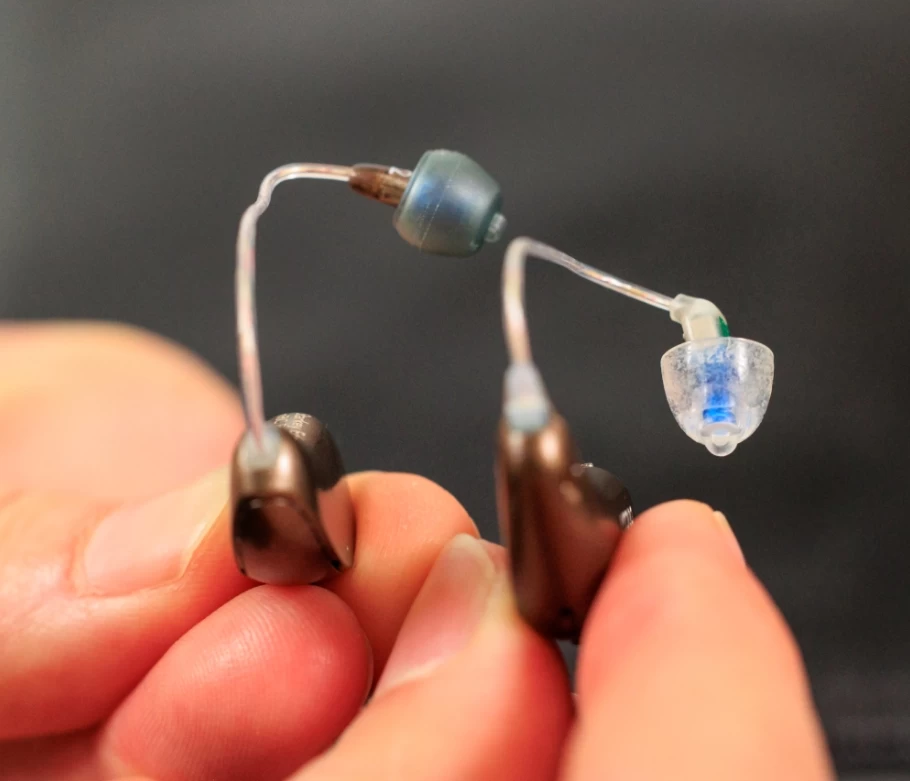
I do think this is a me issue, and it’s likely that my unique combination of narrow and bendy ear canals are probably to blame, because while there was at least one other report of this online, I’ve never heard this complaint from our customers. And, Oticon isn't the only manufacturer to use this style of angled receiver—Signia and Widex do as well.
Apart from the itch these caused me, I do actually like the way Oticon bends the receiver. I’ve found that the bend is so aggressive that, once the hearing aid is correctly positioned in your ear, it creates tension on the receiver wire in the opposite direction of its natural curve. This tension helps the hearing aid fit snugly and stay secure.
How it looks
Dimensions (LxWxD): 26.2mm x 7.4mm x 12.1mm
Weight: 3.03g
From the side or from behind, Intent is no more noticeable than most hearing aids, and in fact much less noticeable than its biggest competitor, the Phonak Audéo Sphere Infinio.
But, I’m not in love with how this hearing aid looks from straight on. I found that the receiver wire was brighter and shinier than competitor devices, and this made it stand out more. To be sure, I put the Intent in my right ear, and a competitor device in my left ear and asked my wife if she could tell a difference from straight on—if one was more noticeable. Indeed, the Intent hearing aid (because of the receiver wire), was more noticeable.
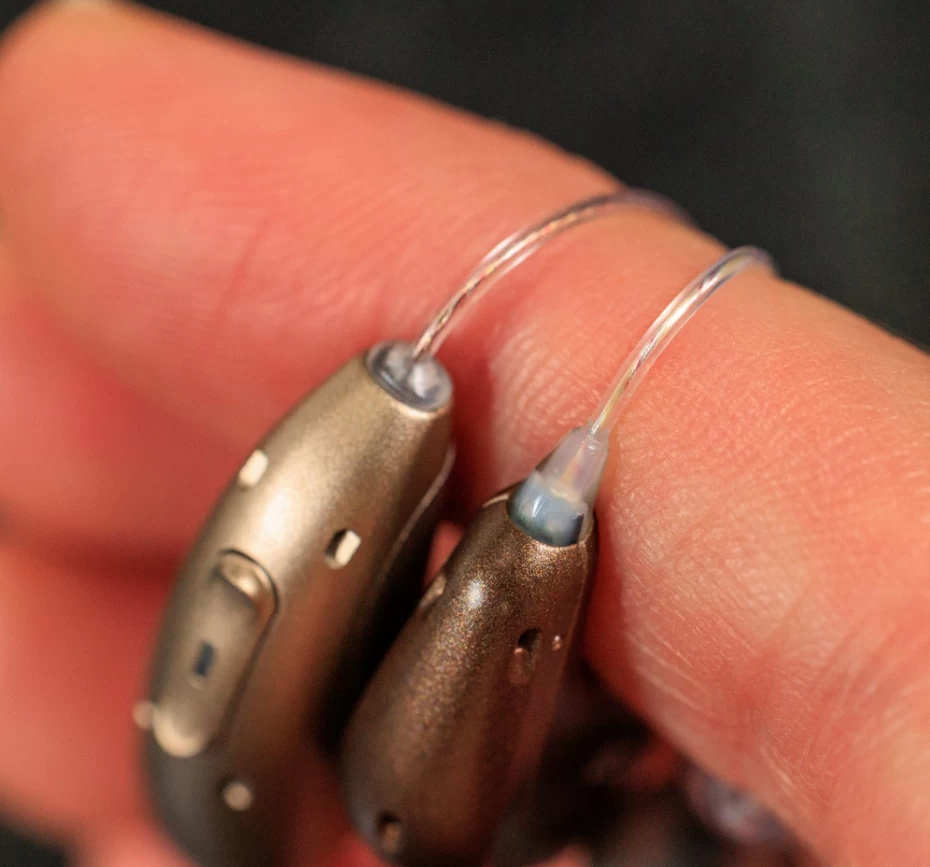
If you have silver, gray, or white hair, you probably won’t notice this at all, and the color of the receiver wire may actually make the hearing aids hide better. For someone like me with a bit of a darker complexion and hair, it had the opposite effect.
As soon as I noticed this “issue,” I remembered a product called Vanish (not an affiliate link), which lets you dye the receiver wire to be more of a skin-toned color. This could be a good solution for you if you feel the receiver wire is too noticeable. I contacted Oticon to inquire as to whether using the Vanish product would void the hearing aid warranty and they assured me that using this dye would not affect your warranty. I wouldn’t recommend that you proactively buy this dye. Wait and see if this is an issue for you at all— it probably won’t be.
I want to be clear. I’m not advocating for hiding hearing aids, but I know cosmetics are a big concern for a lot of people, especially first-time hearing aid wearers. I also want to be clear that Intent is not the only hearing aid with a shinier/brighter receiver. The receivers on both the Signia Pure Charge&GO IX and Widex Moment hearing aids also have a brighter look to them.
How I Programmed the Hearing Aids
I usually set up all hearing aids I try in a similar way: I leave Program 1 in the "General/All-around" mode so the hearing aid can automatically adjust to different environments on its own. In Program 2, I add a manual "Speech in Noise" program for times when I need extra clarity in loud places, like restaurants.
What's different with the Intent hearing aids is that they don’t actually require an extra program for noisy situations. I was able to apply the same aggressive speech enhancement settings found in Oticon’s Speech in Noise program directly to the General program. That way, when I was in a noisy environment, the aids automatically adjust to the Speech in Noise settings, so I don’t need to switch programs—everything stays in General, adapting as I need it.
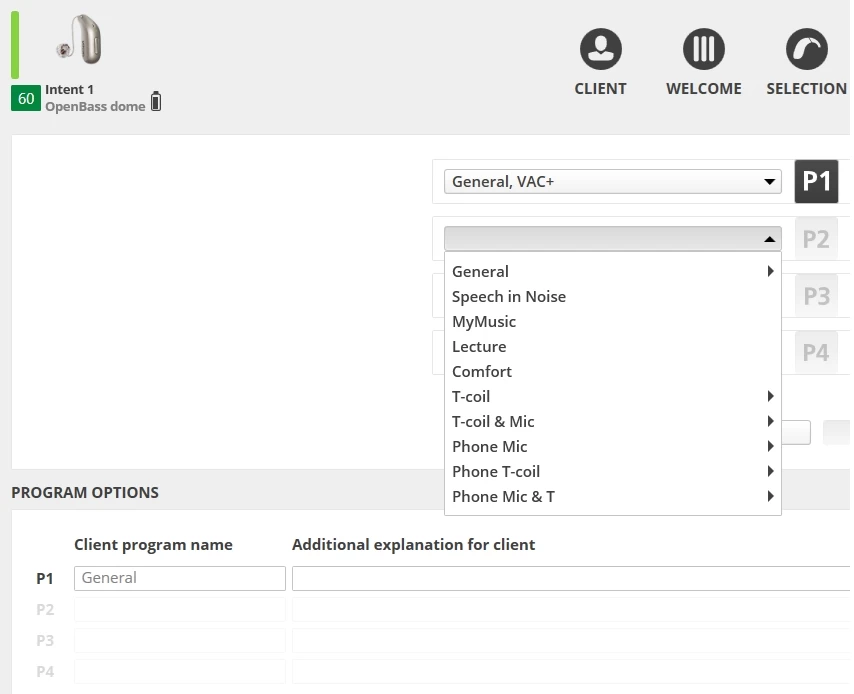
Depending on how “in the weeds” you are with your hearing aid research, you may or may not recognize something a bit odd in the above list of programs from Oticon—it’s minimal. Oticon gives you (4) programs you can manually switch into if you want, when other brands give you 8+.
Why so few programs compared to competitors? The answer from Oticon would be—because Intent continuously scans the environment and adapts to the user intent in real time. But, every hearing aid manufacturer would say that, and they all still give users 8+ manual programs to switch into, so what’s really going on here? Well, it’s a bold move to not give users those extra programs. So bold, that I can only assume that this is a testament to Oticon’s conviction in their BrainHearing(™) technology —believing that their hearing aids are sophisticated enough to support the brain’s natural ability to make sense of sounds without the user needing to frequently adjust settings.
And it makes sense if you think about it. It always feels weird to me when I see 8+ programs I can choose from on a hearing aid. If your hearing aids are so good at scanning the environment and auto-optimizing, why are you giving me so many options to override that?
All that to say—it appears the researchers and audiologists at Oticon think folks should use their hearing aids the way I do. In essence, keep them as simple as possible and let them do the heavy lifting. This feature alone—only needing a General program—would be reason enough for me to choose this as my favorite hearing aid. If only they didn’t make my ears itch!
Setting up the user controls
There’s only a single button on Intent hearing aids, so Oticon has made it multi-functional, depending on how you press it.
Here is the default behavior of the push-button:
- A short press of less than 1 second will change the volume of both aids (right side turns both up, left side turns both down)
- A longer press and hold of 2 seconds will change the program of both aids
- A longer press and hold of (3 seconds), will turn the aids off
When you get an incoming call, the functionality of the button changes:
- A short press of less than 1 second will answer a call
- A longer press and hold of 3 seconds will decline the call, or end an existing call
- A ‘double tap’ will answer or end a call (more on that in a minute)
All of that can be kind of confusing, and I knew I’d never need to change the program, and I’ve never felt the need to change the volume with any hearing aids. With that in mind, I changed the settings so the push button could only do one thing—a press and hold of 3 seconds would shut the hearing aids off.
When you get a phone call, the caller ID isn’t announced through the hearing aids, which means you’ve got to look at your phone anyway, and at that point, you might as well just hit “accept” on your phone to answer the call, rather than reaching up to push the button on the hearing aid to answer the call, so I deactivated that default functionality as well.
As I mentioned a minute ago, there’s a double tap feature as well. In theory, when a call comes in, you can make a double tap gesture near your ear/hearing aid and this will accept or end the call. Like with other hearing aids I’ve tried, this feature didn’t work reliably enough for me to want to use it, so I turned it off.
If you haven’t noticed, I prefer a minimalist approach
Pulling the hearing aids out of the charger turns them on. They auto-adjust in every environment, even noisy environments, which means I never need to use the app. Pushing the button for 3 seconds will shut them down, or simply putting them back in the charger will as well.
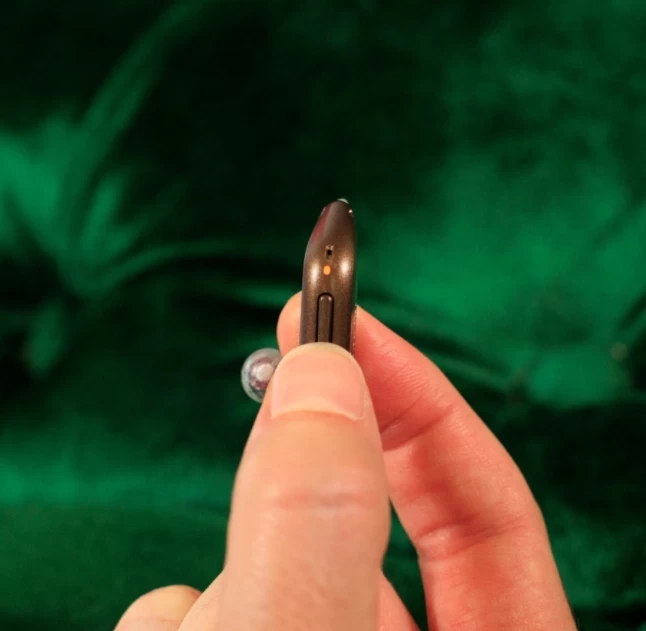
And that's all the engagement needed for the hearing aids to work optimally, which is exactly how I like it, and unfortunately, pretty rare in the hearing aid world. With other devices I’ve tried, I always had to fiddle with the app and onboard controls much more than the Intents to get the aids to do what I want, so this is a huge plus for the Oticon Intent.
Overall Sound Quality & Performance in Noise
My biggest complaints with Intent are really the same complaints I have with any hearing aids—some things just didn’t sound natural. Microwave dings, chimes, electronic alerts, notifications—all those types of sounds have a weird fluttering effect, they almost sound harmonized. Overall, I would describe the sound quality of speech to be clear and crisp.
There was minimal echo in my voice
As compared to the Phonak Audéo Sphere Infinio and Starkey Edge AI, Intent was certainly my favorite hearing aid in this category. With the other devices, my own voice felt over-amplified creating a boomy/echo sensation. With Intent, if there was any echo at all, it was barely noticeable.
Wind noise handling was very good
Oticon says Intent hearing aids detect and filter wind and handling noises 500 times per second, and I believe it. I had to drive 50 MPH with all the windows down and then stick my head out the window to even start to hear wind noise. With other hearing aids, wind noise and the scratchy sounds it makes on the microphone would start to be noticeable at just 30 MPH with the car windows rolled down at all.
Performance in noise
What I love about the Intent, that no other hearing aid with a deep neural network can do, is when I’m in a noisy place, its most aggressive speech enhancement technology kicks on, without needing any manual interaction from me whatsoever. When I go out to eat, I want to put the hearing aids on and forget about them, and leave the phone in the car so I don’t have any distractions. Intent allows me to do this. I don’t need the app to get the most out of Intent hearing aids in noise.
To test these out, I went to a restaurant that is always very noisy. The World Series was playing, there was a full bar, full restaurant, music blaring—it was as lively as any restaurant ever gets. When I entered the restaurant, I didn’t notice the hearing aids doing any kind of ‘switching’ like I sometimes notice. That’s a good thing. It means as the hearing aid is adjusting to my environment, it’s very fast and subtle—that’s what you want.

Intent did a really good job for me in noise. When someone at my table started talking, and I looked at them, I felt like the aids gave my ears a sort of tunnel vision (in a good way), and like their speech was “beaming” right to my hearing aids—like there was some kind of invisible connection. And then if someone else started talking and I turned my head to look at them, it’s like that “beam” or audio stream would “switch” over to them. I think that positive experience is probably attributed to the 4D sensor tech in these hearing aids.
As soon as I experienced this, I remembered the third user review we ever got on Intent, from one of our customers named Elliot. You can find Elliot's review further down this page in the 'reviews' section, but here's an excerpt:
“Oticon Intent 1s gave me a newbie’s “aha” moment with the huge improvement in speech-in-noise where I’ve always struggled. I’m no longer as nervous about going into restaurants, to receptions and the like. The feature allowing the aids to focus on an individual in a group when you turn your head as they join the conversation feels as if I’m hearing them far better than with my older versions of Oticons.”
Bluetooth Review
As I mentioned above, Oticon Intent has Bluetooth LE Audio, the next generation of Bluetooth. But, not many phones have Bluetooth LE Audio yet—including my iPhone 13—so that meant I had to connect my iPhone to the Intents using the MFi (Made for iPhone) specification.
In terms of ease of connecting the Intents to my iPhone via Bluetooth, I have to give Intent the highest rating I can—it was easier than other hearing aids I’ve tried that also use the MFi specification.
Connecting to Intents (at least via iPhones), is a two-step process, because you have to pair the aids to your phone, but you also have to pair the aids to the Companion app (if you want to use the app).
To connect the aids to your phone, you first want to go into Settings -> Accessibility -> Hearing devices, and follow the pairing instructions. It takes 10 seconds for your phone to find the Intent aids and connect to them. Once that pairing is complete, any audio from your phone can stream to your Intent hearing aids.
If you want to use the Companion app (and you should at least download it to see what it can do), you then have to follow a separate pairing process that the app will guide you through, it takes 5-10 seconds, and you can then control the Intents with the app. I’ll write more about the app a bit further down in this review.
Streaming sound quality & connectivity
I’m not a fan of the streaming sound quality of Oticon Intents. To be fair, I’m not a fan of the streaming sound quality of any hearing aid that uses the MFi specification. Whether I’m streaming phone calls, music, YouTube videos—the sound is just tinny and not rich or well-balanced, there is no base. Earlier I mentioned how the Intents had more circuit noise compared to other aids I tried, and unfortunately it was even more pronounced when I was streaming audio.
The good news is if you have a phone built in 2017 or later, that phone will probably eventually get a software update which gives it Bluetooth LE Audio, and that is reported to offer much better sound quality than the MFi specification.
Connectivity between my phone and the hearing aids was fairly consistent up to about 30 feet, at which point it became really choppy and I’d lose the stream in one ear. It wasn’t perfect. Even at very close range (the phone in my pocket), I would sometimes get weird intermittency from one of the hearing aids, almost like the hearing aid was “thinking” for a millisecond or had for a split second lost connection to the phone—but at close range connection never truly dropped.
Companion App Review
As of November 2024 this is my favorite hearing aid app, and I can’t understand why it has literally the worst reviews of any of the 6 major hearing aid brands—2.3 stars.
Many users complain of connectivity issues between the app and the hearing aids, but I never experienced that. In fairness, I only used the app on maybe 10 different occasions because…my favorite thing about the app is, you don’t have to use the app! With other hearing aids I’ve worn, I had to use their app to get the best performance out of the hearing aids—with Intent I did not have to and the app is completely optional.
The only reason I can recommend using the app is for a feature called Speech Booster, but you may not even need that—I didn’t.
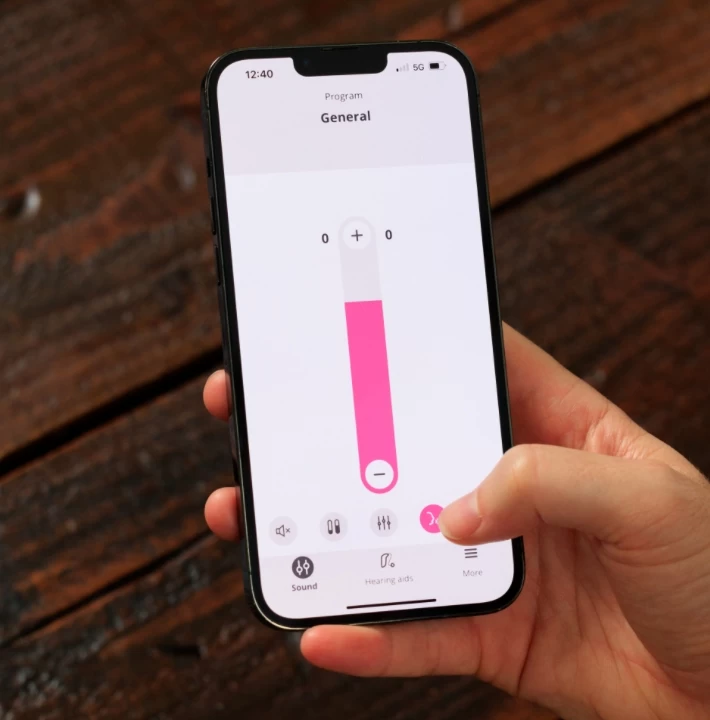
Here’s everything you can do with the Companion app:
- Mute the hearing aids
- Control the volume, each aid independently, and together
- Change the hearing aid program
- Adjust the low, mid, and high frequencies (for all-around listening and Bluetooth streaming, independently)
- Speech Booster feature to enhance speech in a noisy environment
- Use your phone as a remote microphone to send audio directly to the hearing aids
- Check your hearing aid battery life
- Find your hearing aids if you lose them
- Find information about your hearing aids like model, firmware version, and serial numbers
- Track your wearing time via the ‘HearingFitness’ section of the app
- Get remote care from your hearing care provider (if you’re provider is set up for this)
- Access a knowledge base with instructions and help with troubleshooting
Battery life
Oticon says Intent has up to 20 hours of battery life, but I think that’s actually a low estimate. I guess they figure it’s better to underpromise and overdeliver. Each day when I woke up and put the hearing aids in, I would check the battery level of the hearing aids via the Companion app, and it would usually say I had between 28-29 hours of use remaining. By noon each day my battery was still showing above 90% with an estimate of 15 hours of use remaining. By the end of the day the lowest I ever saw the battery (around 8pm), so 13 hours of use, was 40%.
I did about 1 hour of Bluetooth streaming a day, streaming music from my phone. I did notice that bluetooth streaming drained the battery significantly faster, so be aware of your battery levels. Warning: I’m not sure how accurate the Companion app is at estimating remaining battery life of the aids. There were times it’d say I had an estimated 15 hours left, and then 3 hours later I’d check it and see an estimated 22 hours left.
Oticon Intent Pros & Cons
Pros
Hearing in noise and the 4D sensors work very well. I did a side-by-side comparison in a noisy restaurant, between Intent and a few of its biggest competitor hearing aids. I felt like with Intent it was easiest to tell the direction from which sound was coming, and that the hearing aids were good at understanding what sound was important to me. Intent hearing aids were as good as any I've tried at separating speech from background noise.
It’s very small. It’s over 100% smaller than the Phonak Audéo Sphere Infinio, and just a tad bigger than the Starkey Edge AI. Not only is it small, but it also has earned a great Speech in Noise score from HearAdvisor, and there is nothing smaller that has a better score.
It’s future-proofed with Bluetooth LE Audio and Auracast™. As of November 2024, most users won’t benefit from this, because not many phones have Bluetooth LE Audio, and not many venues have installed Auracast broadcasters. However in the coming years this technology will be widely adopted, and you won’t have to buy new hearing aids to take advantage of it.
The deep neural network is always on. What you’re really paying for (the smart DNN tech), is always on, working for you. The best part about that—and what’s unique to Intent hearing aids—is Oticon’s most aggressive speech enhancement features also auto-activate, meaning you never really have to fiddle with the app if you don’t want to.
It’s very good at automatically adjusting depending on the environment. Compared to competitor hearing aids, Intent took the least amount of interaction/engagement from me. I put them on and they did a great job of adjusting on their own.
There’s not a lot of echo. Compared to other major competitor hearing aids I’ve worn, Intent had the least amount of echo. My own voice sounds very natural and if there’s any echo at all, it’s barely perceptible.
Cons
It was more noticeable. Compared to competitor hearing aids, the wire on Intent was brighter and shinier, which made the hearing aid more noticeable from the front.
The angle of the receiver made my ears itch. Oticon receivers have a unique bend to them. It helps the whole hearing aid fit securely on the ear, but due to the unique shape and size of my ear canal it caused an itching sensation that was hard to get used to.
No disposable battery option. The rechargeable battery life is great and as long as you charge it each night for at least 2 hours, you’re never going to run out of battery during the day. It’ll last well over 16 hours, even with Bluetooth streaming. But personally, I much prefer disposable batteries— it’s just one less thing to think about.
The streaming sound quality isn’t good. In fairness, it’s not good with any hearing aids, and Intent wasn’t the worst that I had heard. I’m hopeful that Apple will activate Bluetooth LE Audio in my iPhone with a future firmware update, as that is supposed to improve streaming sound quality.
Final thoughts
In 2014, ReSound introduced the world’s first Bluetooth-compatible hearing aid, transforming consumer expectations for hearing aid and phone connectivity. There was a palpable feeling in the industry at the time—no manufacturer could release a hearing aid without similar technology, and without shouting it from the rooftops. 10 years later, there’s that feeling again.
In January 2021, Oticon redefined expectations with the launch of Oticon More—the world’s first hearing aid with an embedded, always-on deep neural network (DNN). Since then, competitors have responded with their own DNN-enabled devices, each with unique methods. Yet, Oticon remains at the forefront—enhancing its DNN with impressive updates, while keeping the hearing aids small, and with minimal battery drain.
Today, hearing aids touting signal-to-noise ratio gains of 10+ dB, once unthinkable, are becoming standard. It feels like the hearing aid industry has entered a new AI-driven phase of innovation that is going to result in huge wins for hearing aid wearers—and Oticon has played arguably the biggest part in this.


















->getDescriptorURL()?>)




























































































































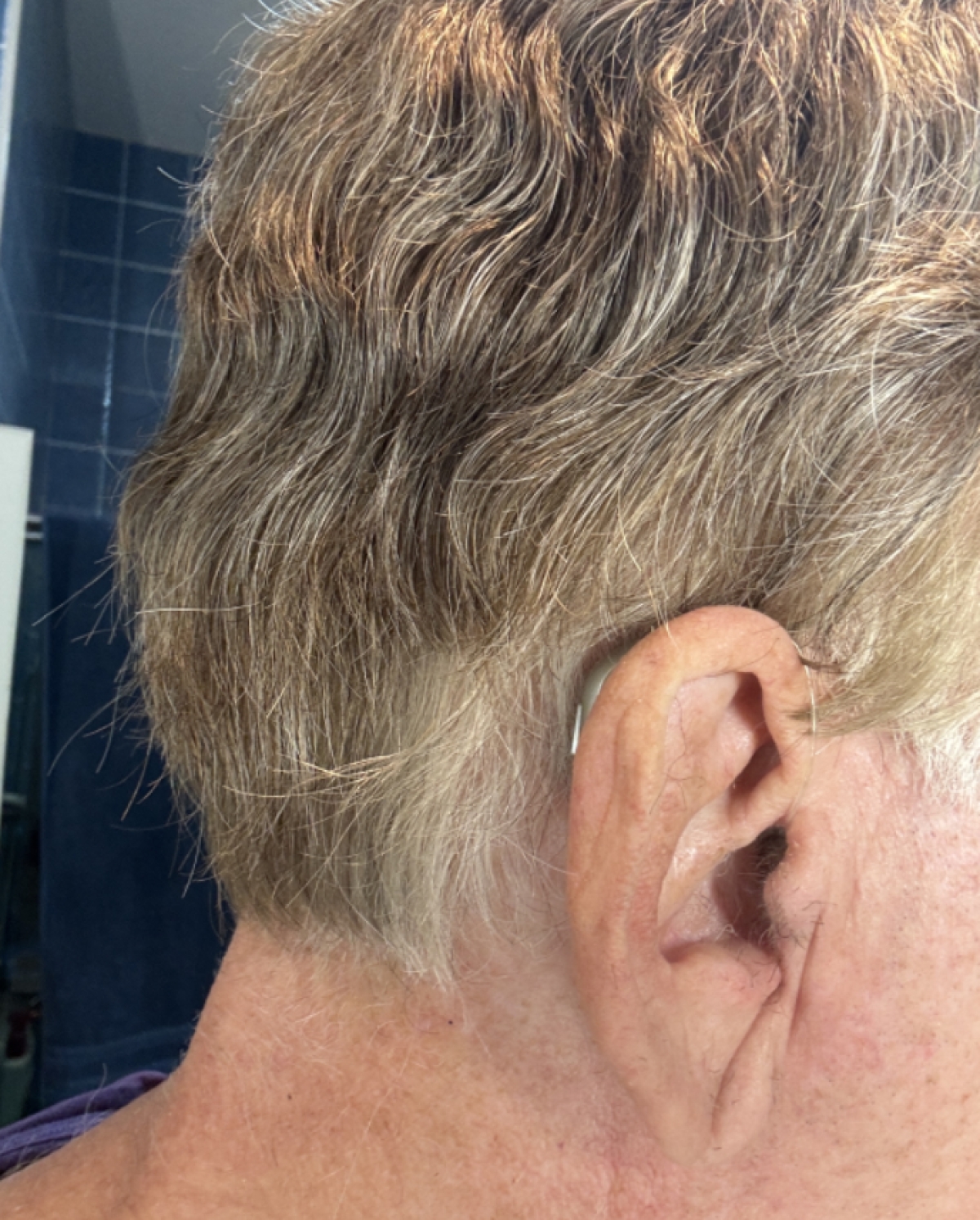
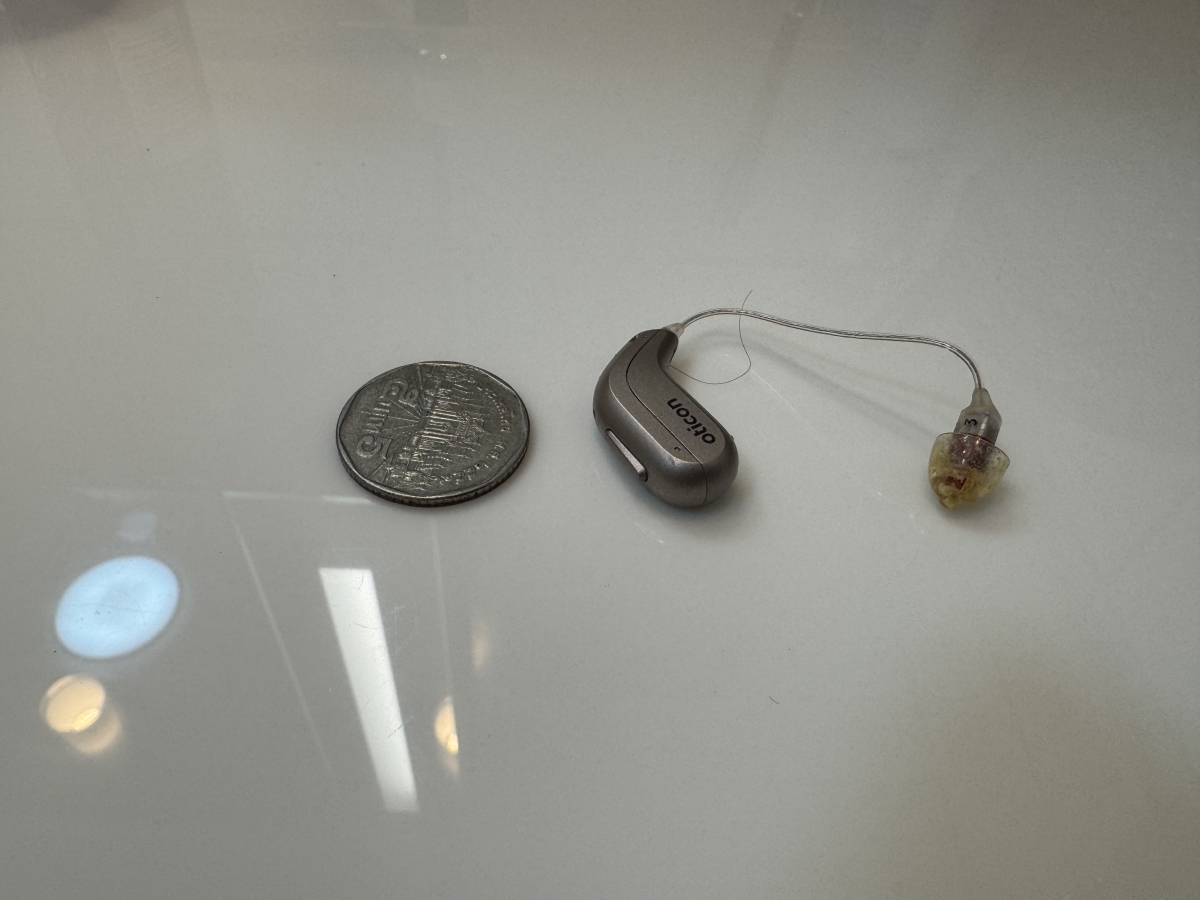

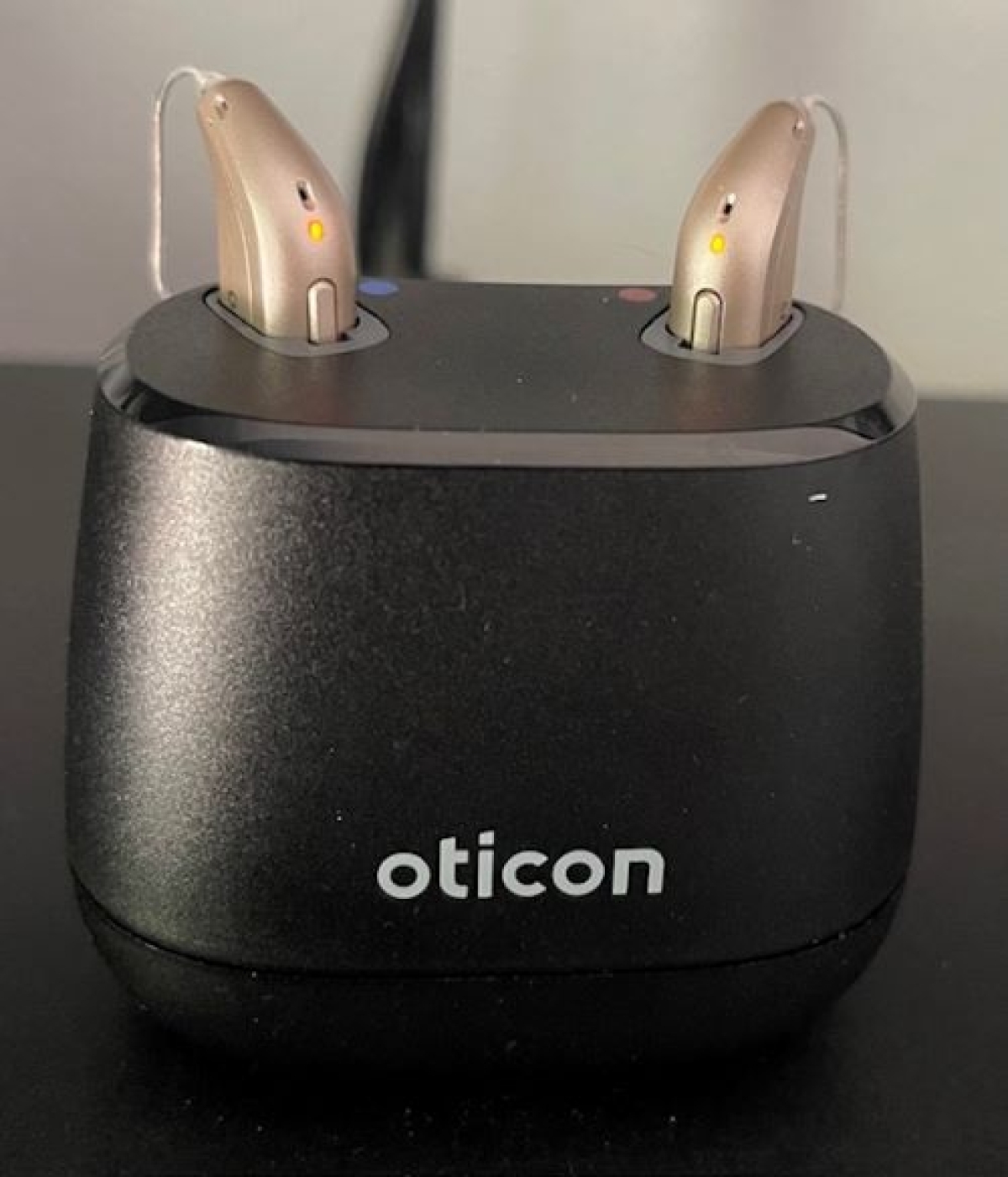

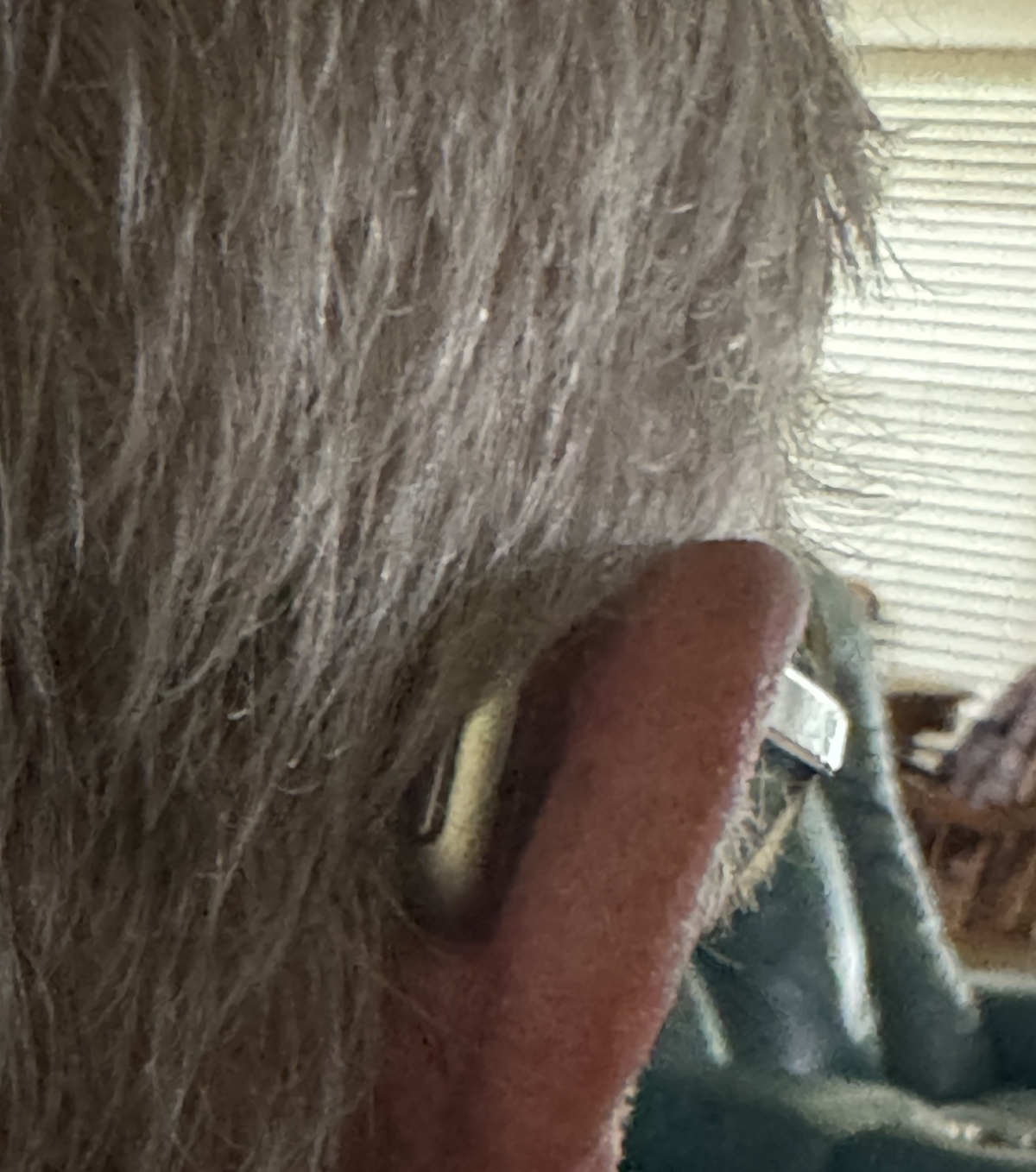
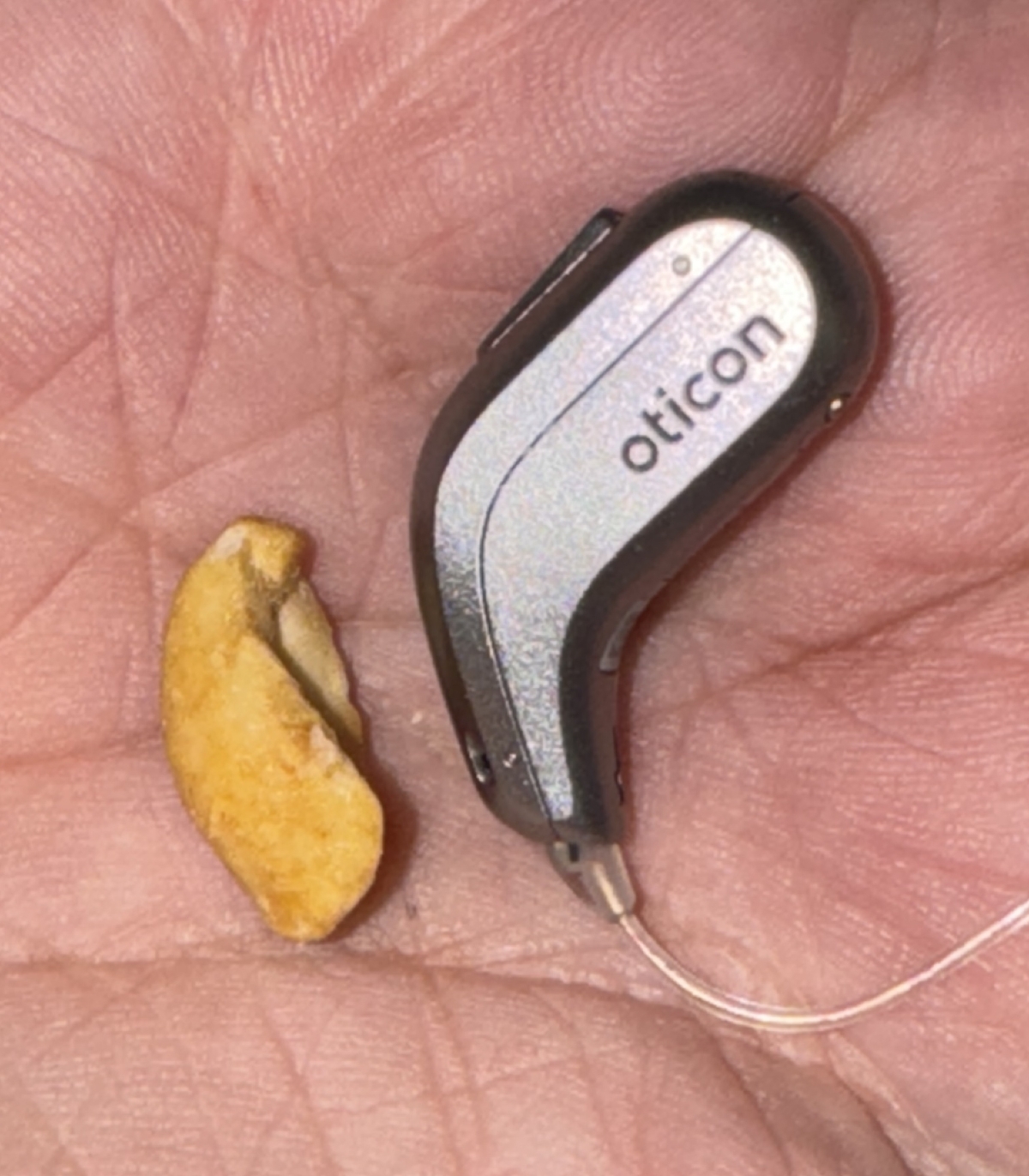
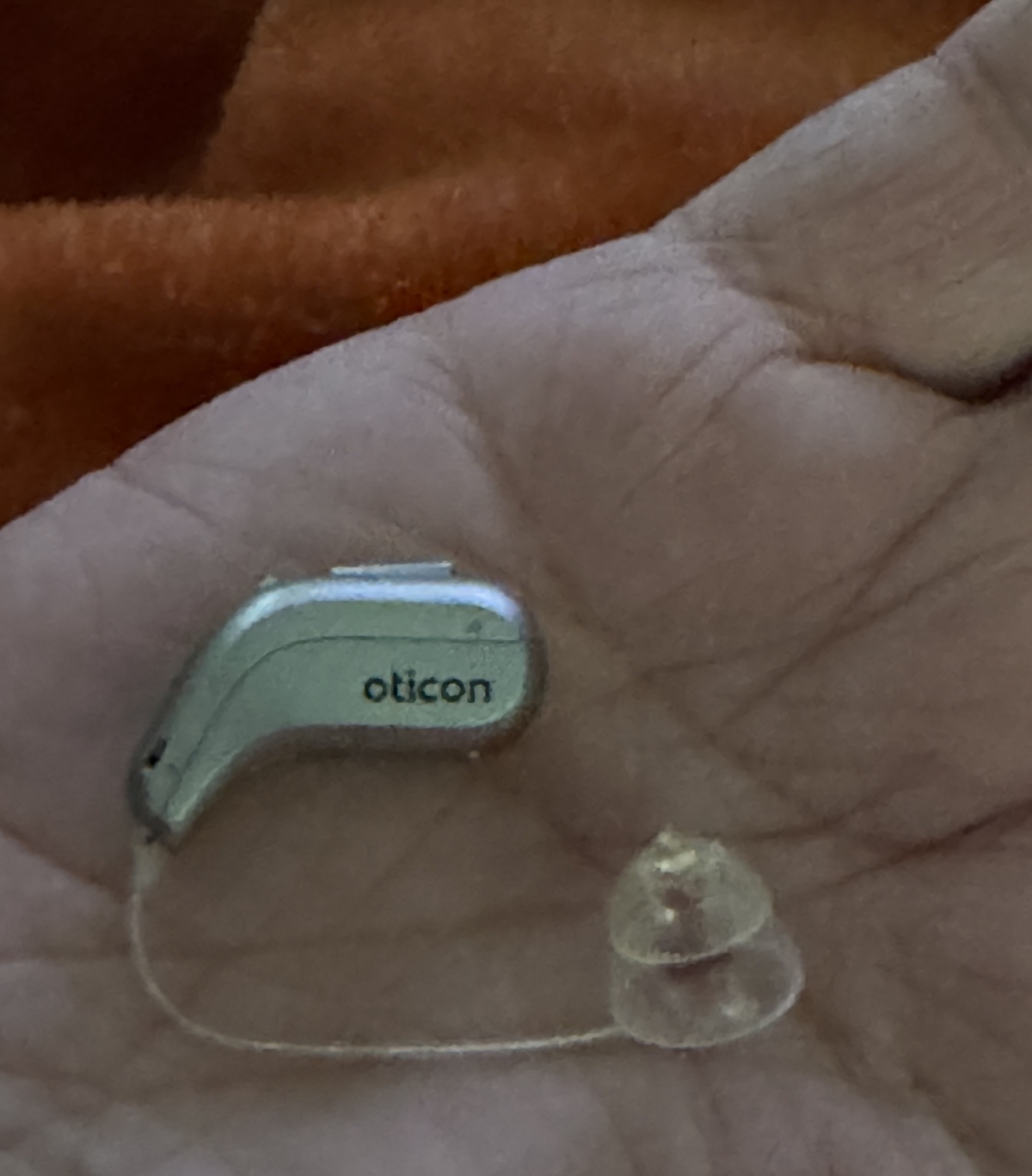


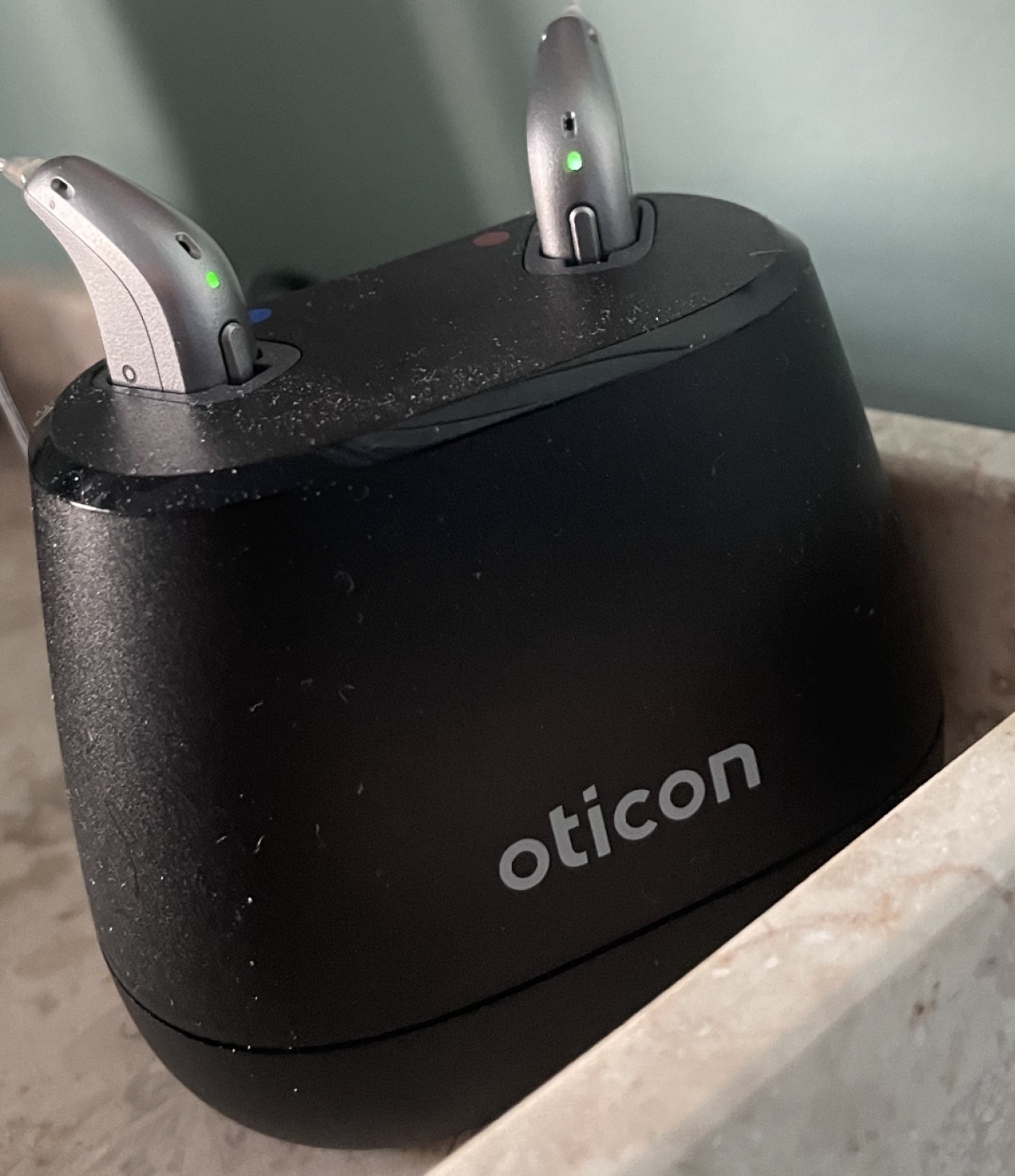







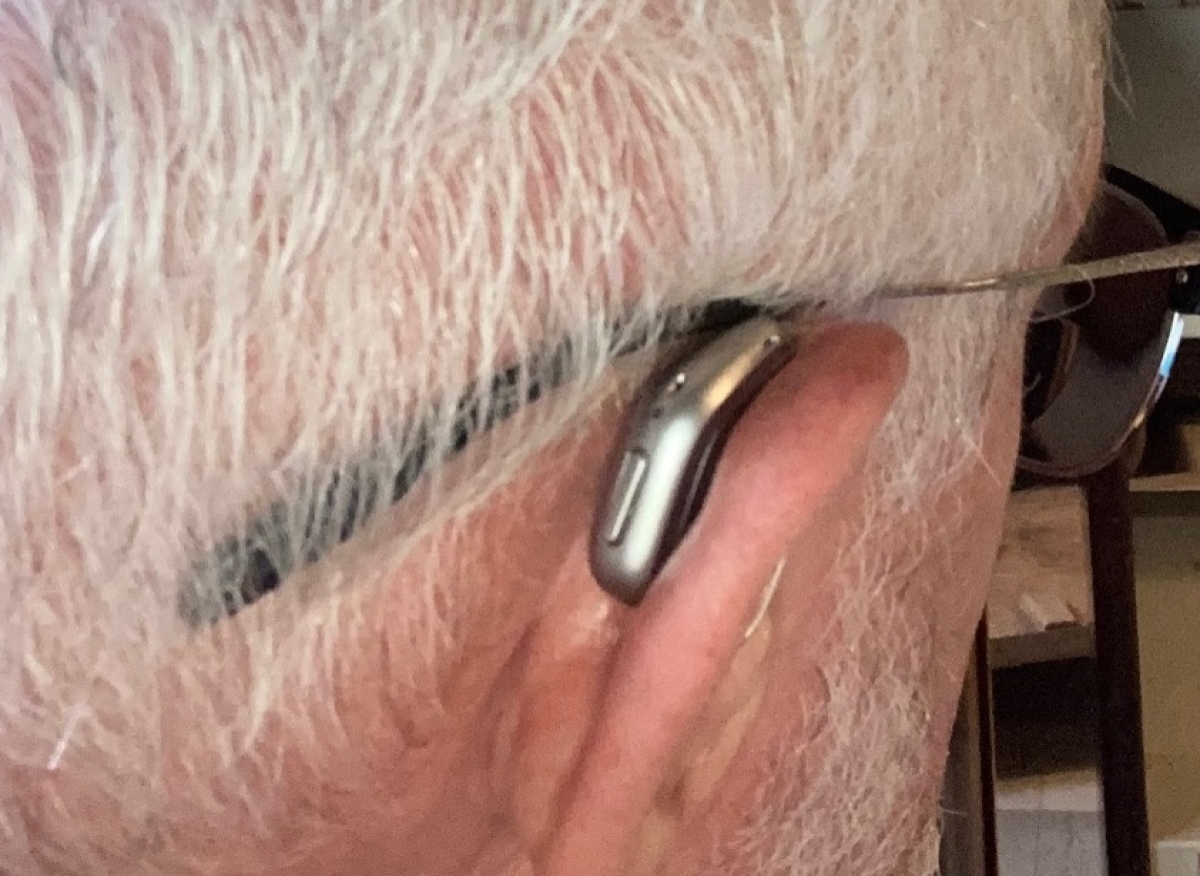

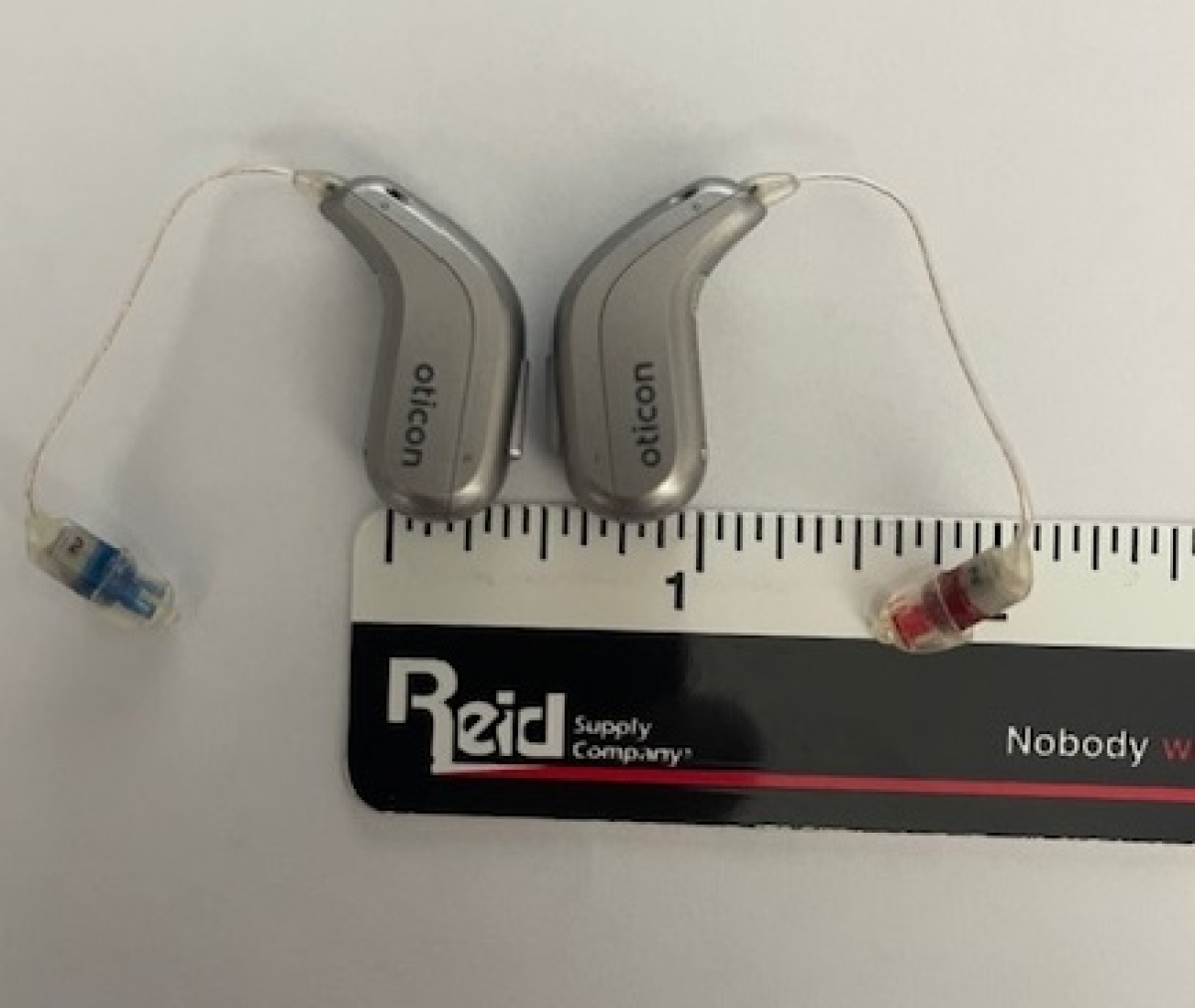
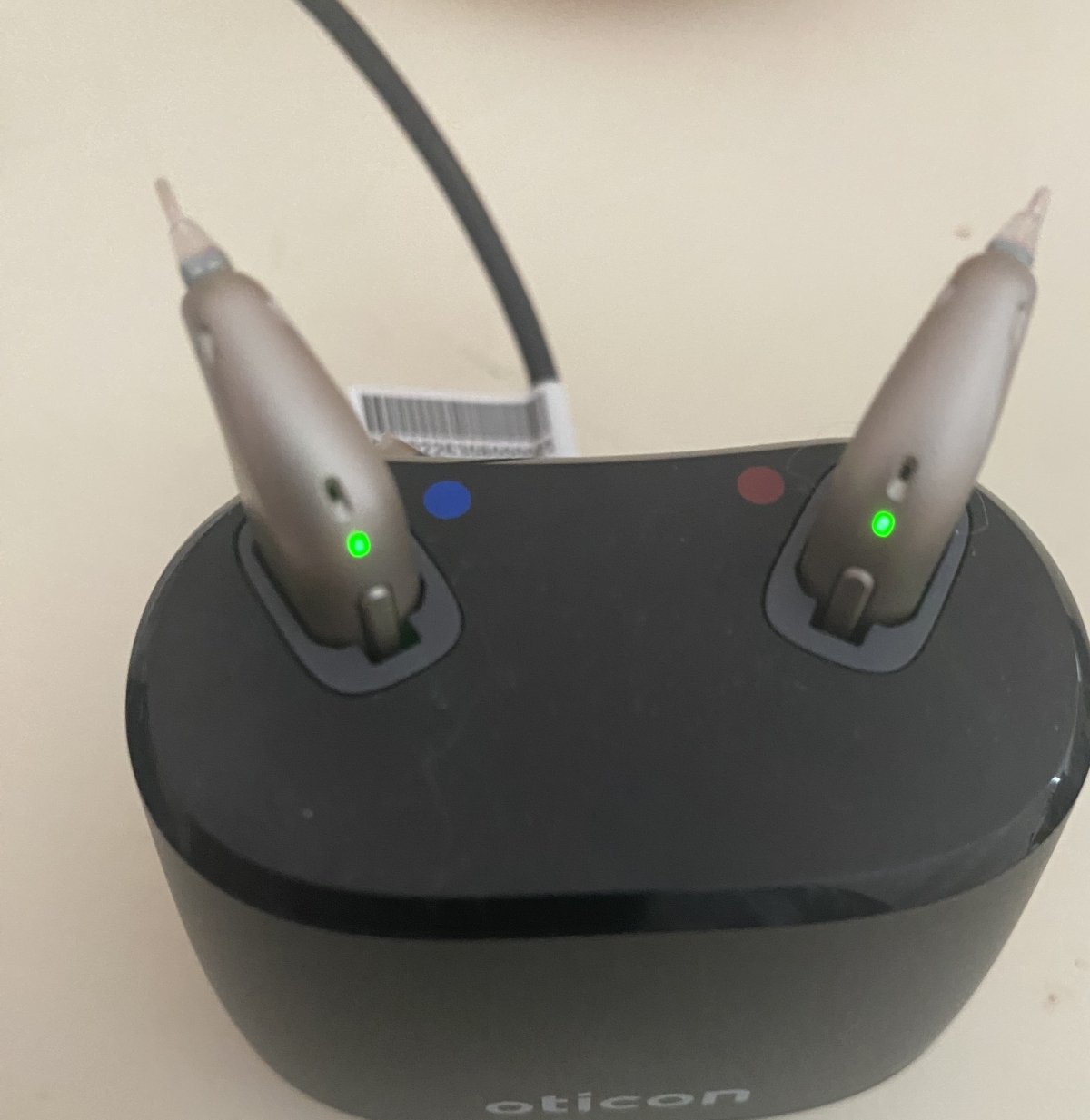



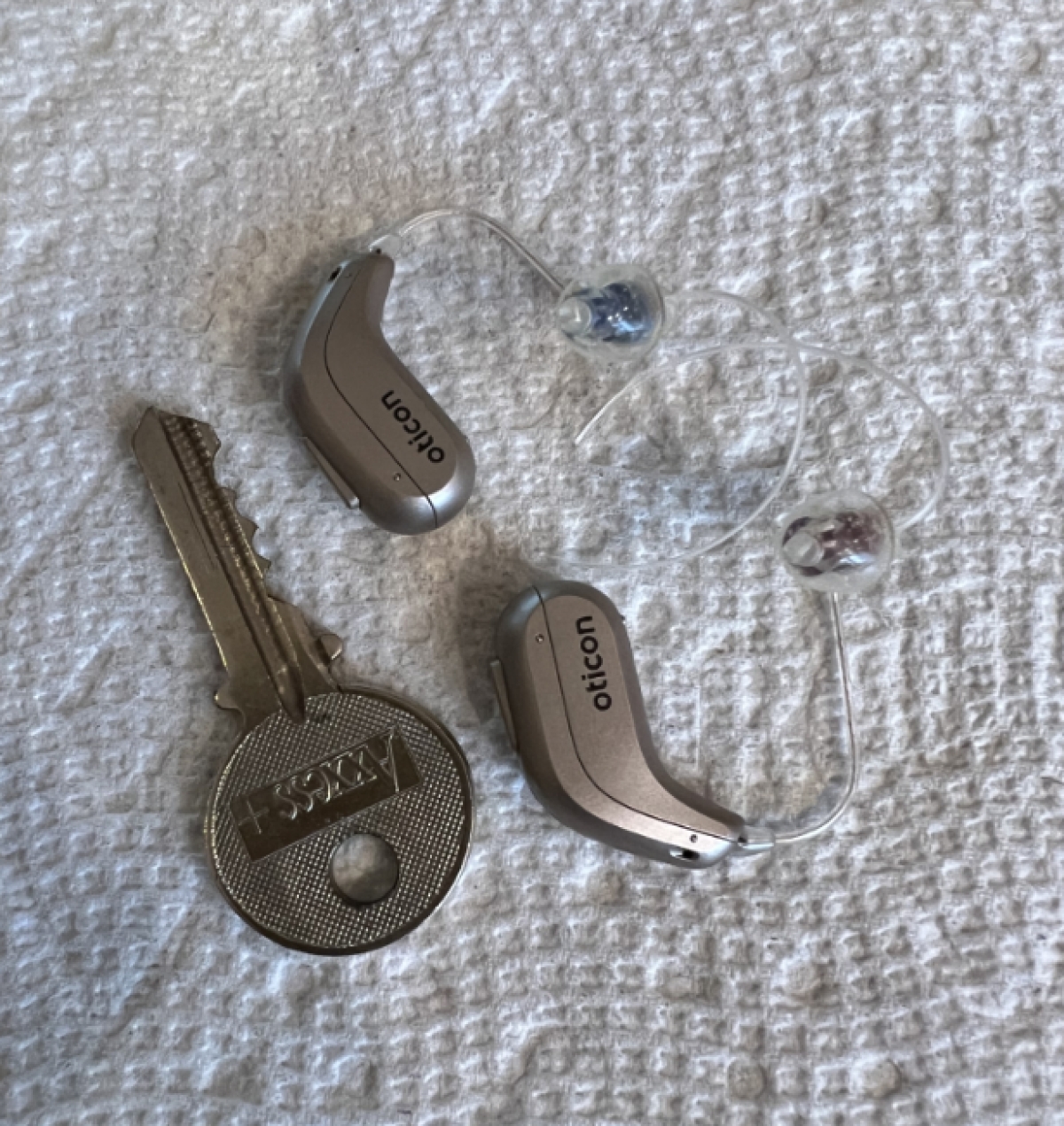

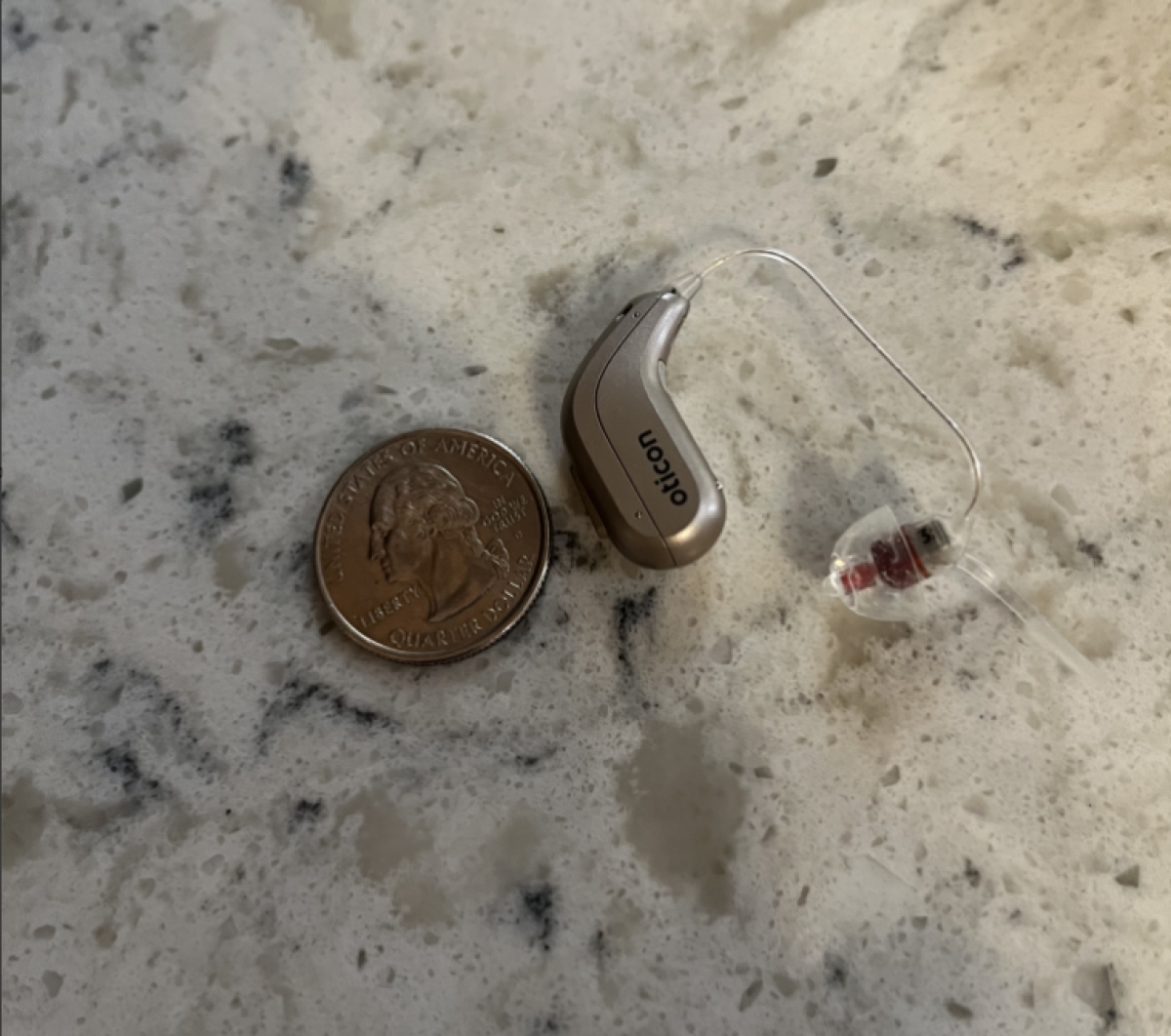

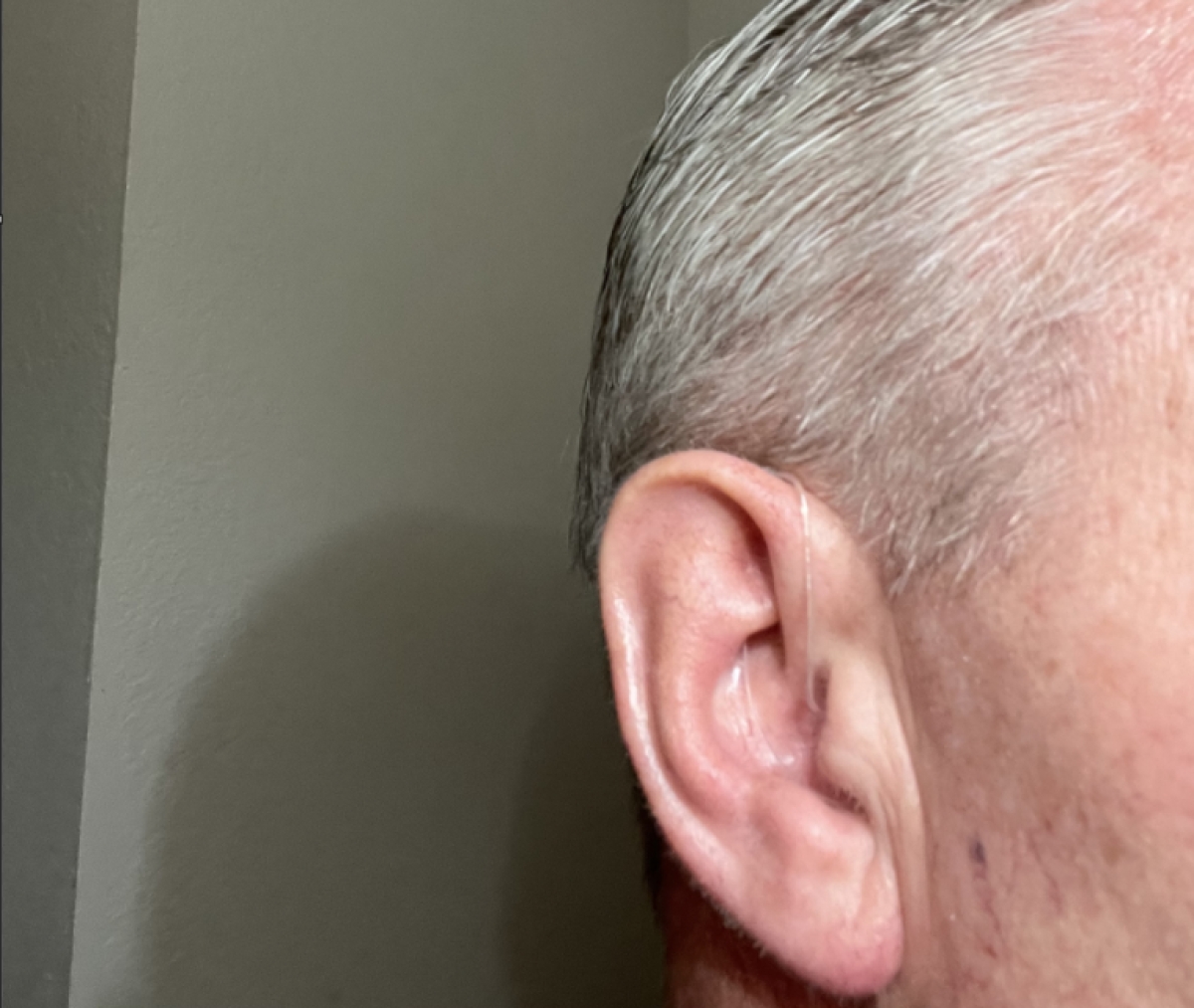






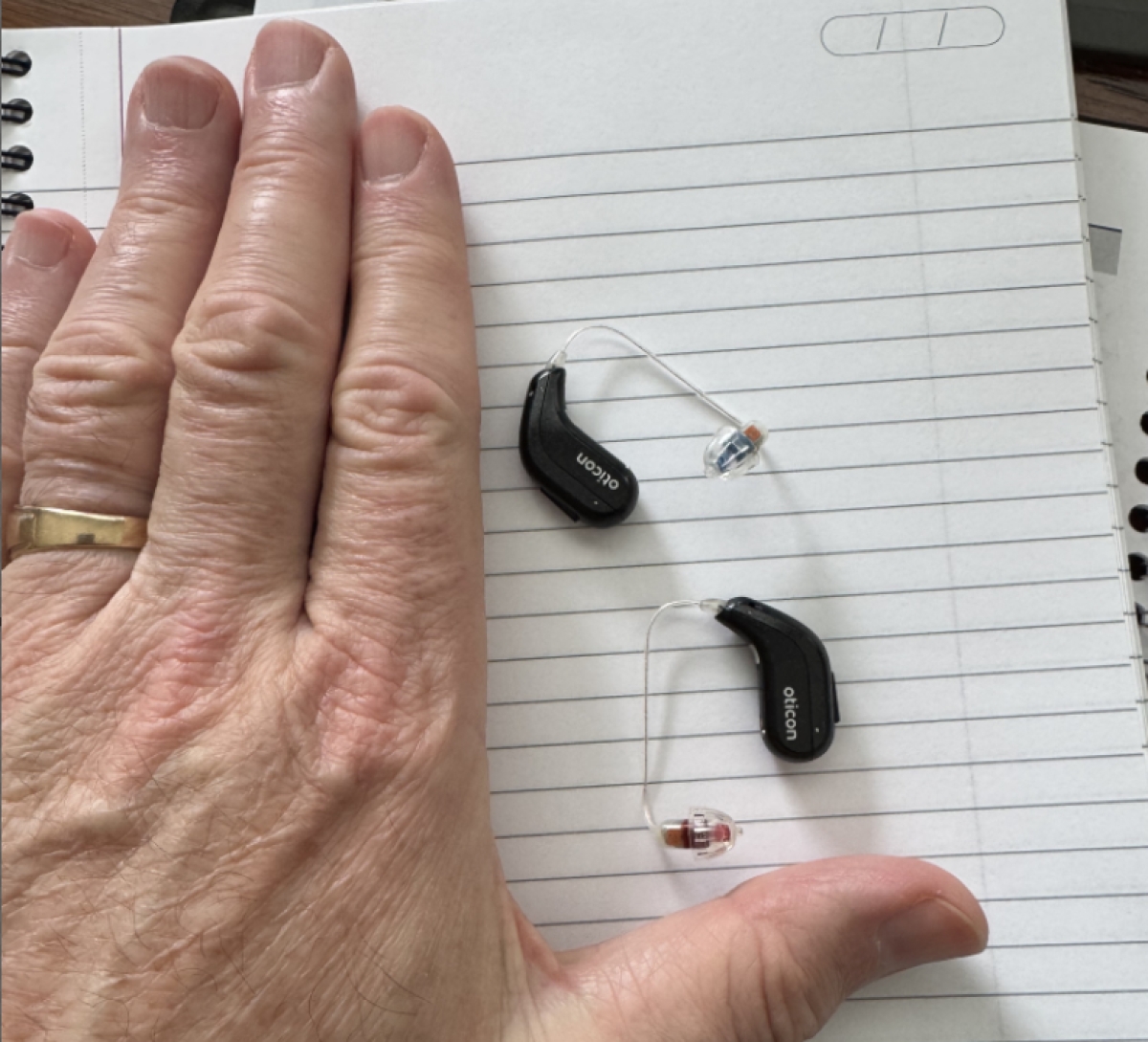
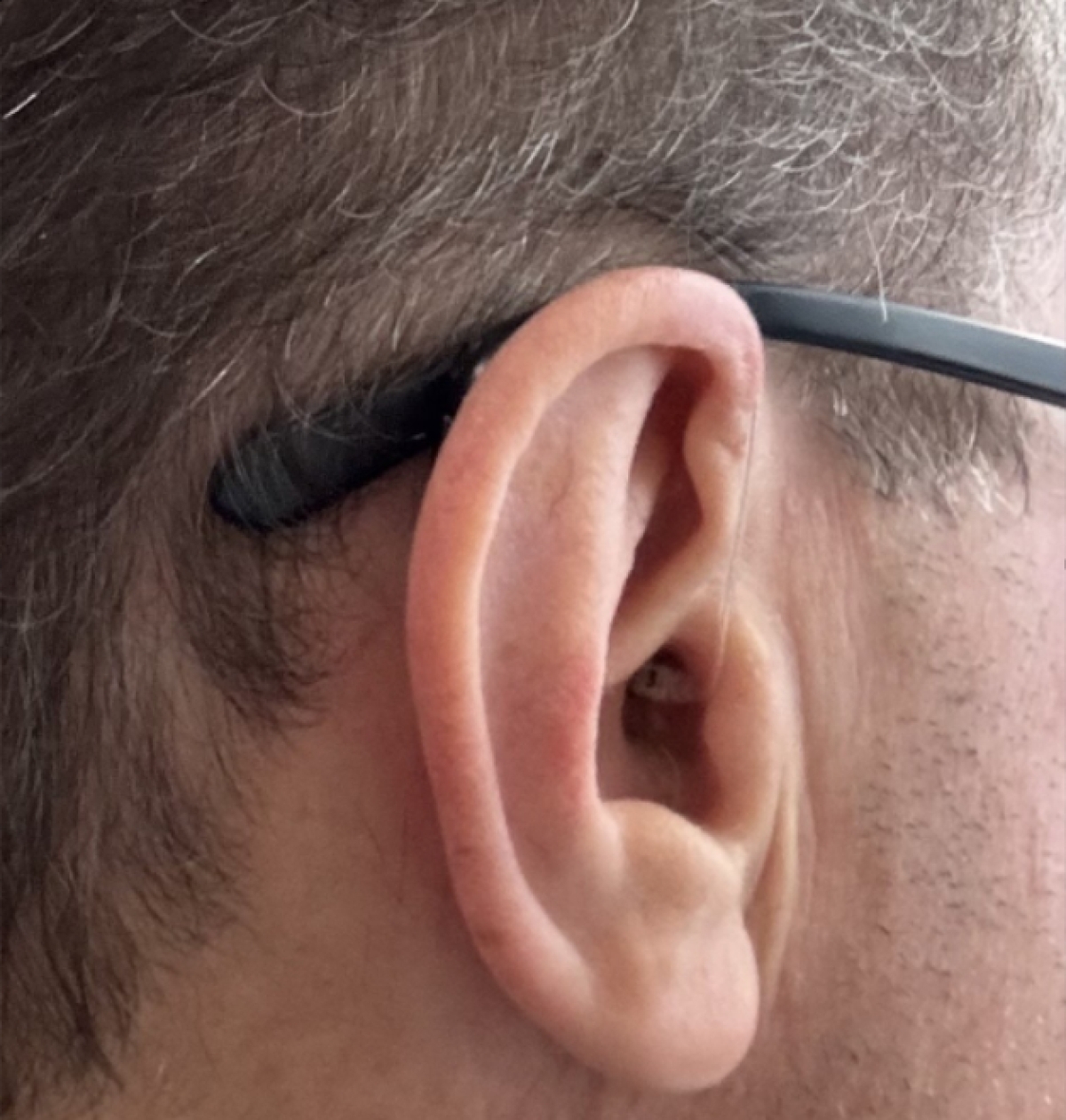



















![Buying Hearing Aids Online [Pros & Cons, Tips] Preview for the "Buying Hearing Aids Online [Pros & Cons, Tips]" video](https://cdn.ziphearing.com/dist/dynamic/files/videos/8/thumbnail/version/1/100/thumbnail.jpg)

![Rechargeable Hearing Aids [Pros & Cons] Preview for the "Rechargeable Hearing Aids [Pros & Cons] " video](https://cdn.ziphearing.com/dist/dynamic/files/videos/20/thumbnail/version/1/100/thumbnail.jpg)



